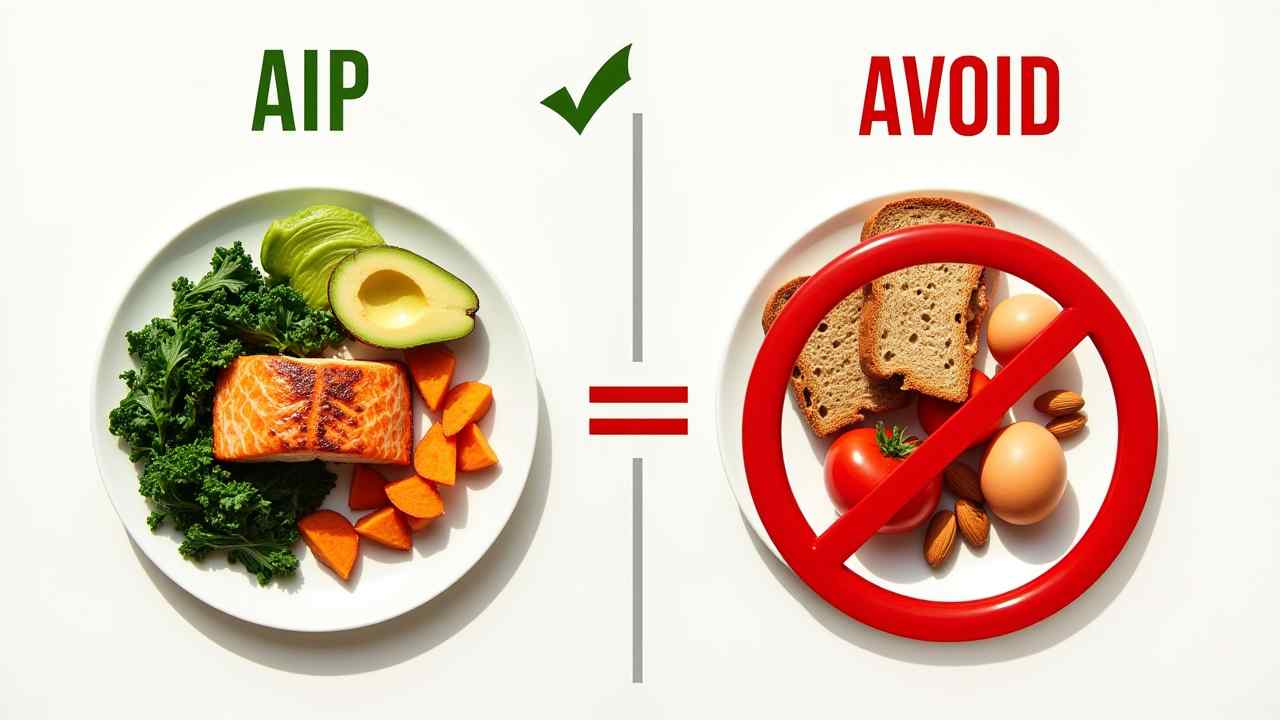
🥑 A Guide to the AIP Paleo Diet (The Ultimate Elimination Plan)
🥑 A Guide to the AIP Paleo Diet (The Ultimate Elimination Plan) 🥑
The AIP Paleo diet is a powerful and specialized eating plan. AIP stands for Autoimmune Protocol. It is a much stricter, temporary version of the standard Paleo diet. Its primary goal is to reduce inflammation in the body. It also aims to heal the gut lining.
This diet is not for general weight loss. It is a therapeutic elimination diet. It is for people with autoimmune diseases. It helps them to identify potential food triggers for their symptoms. It is a journey of healing and discovery.
This guide will explain the principles of this diet. We will cover what you can eat and what you must avoid. Let's explore this effective, gut-healing protocol. ✅
Important Medical Note: The AIP diet is a highly restrictive, short-term plan. It must be undertaken with the guidance of a doctor or a qualified health practitioner.
🤔 What is the Core Philosophy of the AIP Diet?
The core philosophy of the AIP Paleo diet is based on the connection between gut health and immunity. The theory is that a condition known as "leaky gut" can be a driver of autoimmune disease. This is when small particles of undigested food pass through the gut lining. This can trigger an inflammatory response from the immune system.
The AIP diet is designed to heal the gut. It does this in two ways. First, it removes all foods that are common irritants. These can potentially damage the gut lining. Second, it focuses on consuming nutrient-dense foods. These foods provide the building blocks for healing.
- How is AIP Different from a Standard Paleo Diet?
A standard Paleo diet already eliminates many inflammatory foods. It cuts out grains, legumes, dairy, and processed sugar. The AIP Paleo diet takes it a few significant steps further. It also temporarily eliminates some foods that are allowed on Paleo. These are foods that can be problematic for people with autoimmunity.
The key additional eliminations are:
- Eggs
- Nuts and Seeds (including coffee and cocoa)
- Nightshade Vegetables (tomatoes, peppers, potatoes, eggplant)
- Alcohol
✅ What Foods Can You Eat on the AIP Diet?
The focus is on the most nutrient-dense, easily digestible foods. Your plate will be full of high-quality proteins and a wide variety of vegetables. Great choices include:
- Quality Meats: Grass-fed beef, lamb, and poultry.
- Wild-Caught Fish: Salmon and other fatty fish are excellent.
- Vegetables: A huge variety of non-nightshade vegetables. Think leafy greens, broccoli, cauliflower, and squash.
- Healthy Fats: Avocado, olive oil ("zeytinyağı"), and coconut oil are staples.
- Fermented Foods: Sauerkraut and non-dairy kefir can be beneficial.
🚫 What Foods Must You Absolutely Avoid?
The elimination phase is the most important part of the AIP Paleo diet. For a period of 30-90 days, you must completely avoid all of the following foods.
- All grains (wheat, rice, corn, etc.)
- All legumes (beans, lentils/"mercimek," soy, etc.)
- All dairy products (milk, cheese/"peynir," yogurt/"yoğurt," etc.)
- All processed sugars and industrial seed oils
- All eggs
- All nuts and seeds
- All nightshades (tomatoes, potatoes, peppers/"biber," eggplant/"patlıcan")
- What Are the Phases of the AIP Diet?
The AIP Paleo diet is not a forever diet. It is a two-part process. The first part is the strict Elimination Phase. This is where you follow the diet for at least 30 days. The goal is to calm your immune system and reduce your symptoms.
The second and most important part is the Reintroduction Phase. Once you are feeling better, you slowly and methodically reintroduce the eliminated foods, one at a time. This allows you to see how your body reacts to each food. This is how you discover your personal food triggers.
This diet is a powerful tool. It is a great plan to start in the cozy autumn season. It allows you to focus on healing, nourishing foods. It is a journey to better health. 🍂